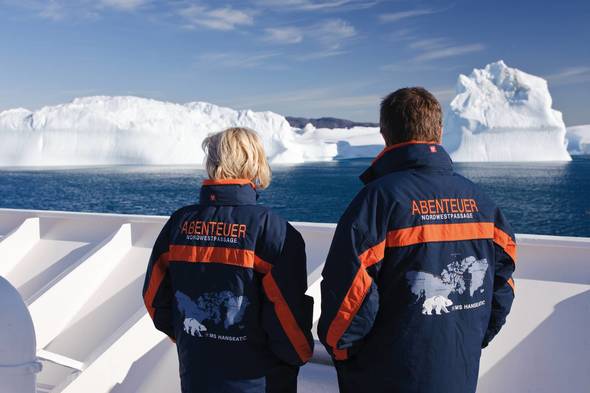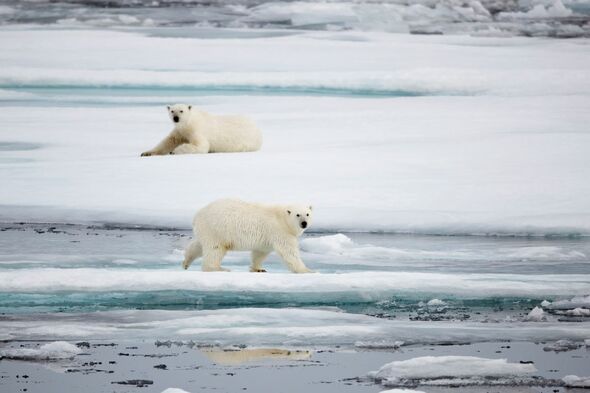In 1966, pioneer Lars-Eric Lindblad, the 'father of eco-tourism', took the very first 'citizen explorers' to a polar region never before visited by non-scientists: Antarctica. This was the start of a small but significant sector of the travel market, known as expedition cruising.
For over 50 years, small ships specifically designed to travel off the beaten track, sometimes into quite dangerous conditions with heavy sea ice, have carried small groups of curious travellers to remote locations where they can learn more about the world, its history, geology, wildlife, culture and, of course, its future. Inspiring expedition teams, experts in a whole range of subjects, travel with these adventurers to ensure they learn as much as possible during their travels.

Image Credit: ©Silversea Cruises Ltd
Unsurprisingly, whilst some travellers view a polar trip as a once-in-a-lifetime experience, others get quite a taste for the excitement of expedition travel: the adrenalin rush as you glimpse something move way in the distance, the race to gear up and transfer onto the zodiacs, the excitement of travelling where intrepid explorers ventured, hundreds of years ago.
As a result of the thinning and receding Arctic ice, one such journey, the Northwest Passage, has become more and more accessible (although there is still no guarantee you will get through).

The search for these polar routes was key to trade in the days of the great explorers - imagine the time and money you might save, journeying from the Atlantic to the Pacific and vice versa, when your only alternative was to go southwards to the treacherous waters around Cape Horn. Early explorers were trying to assess whether there was indeed a sea passage, or whether land bridges would prevent such a journey.
The Northwest Passage is the sea route westwards from Greenland or Newfoundland to Alaska, or vice versa, via waterways through the Canadian Arctic archipelago. For centuries, European explorers had been seeking a navigable route, but the first complete passage was not made until Norwegian Roald Amundsen's expedition of 1903-1906.

Voyages nowadays will often begin in the Alaskan cities of Nome or Seward and travel through the narrow Bering Strait, up and over North America through Canada's Arctic islands and end in Kangerlussuaq in Greenland, or the reverse. Expeditions are scheduled for a duration in the region of 24 days, with mid to late August departures, when the ice has receded to its limits.
During this epic journey, you will explore small towns and villages with a fascinating mix of indigenous and Danish or Canadian culture, as well as emblematic sites of Franklin's and Amundsen's attempts to master the fabled route. Highlights may include the otherworldy landcapes of Devon Island, the world's largest uninhabited island; the wildlife-rich waters of Cambridge Bay; the sombre history and Canadian National Historic Sites at Beechey Island; and the Inuit community of Mittimatalik on Baffin Island.


Get your free Arctic guide
Our expedition cruising guide to the Arctic will tell you everything you need to know, including when to visit, what to see and how to get there.
As for wildlife, of course everyone will be looking out for polar bears, as well as other land animals such as Arctic foxes, hares, caribou and musk oxen, but you might also see narwhal, beluga and bowhead whales, seals and walrus in the water.
There is also the opportunity to spot birdlife throughout the voyage such as the colonies on Prince Leopold Island, the most important bird sanctuary in the Canadian Arctic. The expedition team will be on hand to provide insights about the incredible wildlife to be found in these remote outposts.

Image Credit: ©Silversea Cruises Ltd.
Scenery, as you get away from the sparse settlements, will be stunning, a true wilderness: tundra, glaciers, a sprinkling of summer colour, sheer cliffs and waters clogged with growlers and bergy bits. Aurora sightings are possible, and the extraordinary colour palette of all manner of black, grey, blue and white feels literally 'out of this world'.
You can expect to explore these striking landscapes during Zodiac cruises and landings, guided trail walks and hikes, and perhaps even kayaking tours, to fully take in the spectacular scenery from all angles.

Cruise lines offering these remarkable routes include Silversea Expeditions, Ponant on board their luxury ice-breaker Le Commandant Charcot, Lindblad Expeditions, Hapag-Lloyd Cruises, Seabourn, HX Hurtigruten Expeditions and AE Expeditions.
Passengers taking on this legendary journey will be required to sign a disclaimer indicating their understanding that the voyage may not be possible - like many polar expeditions, variable conditions could require last minute changes!










